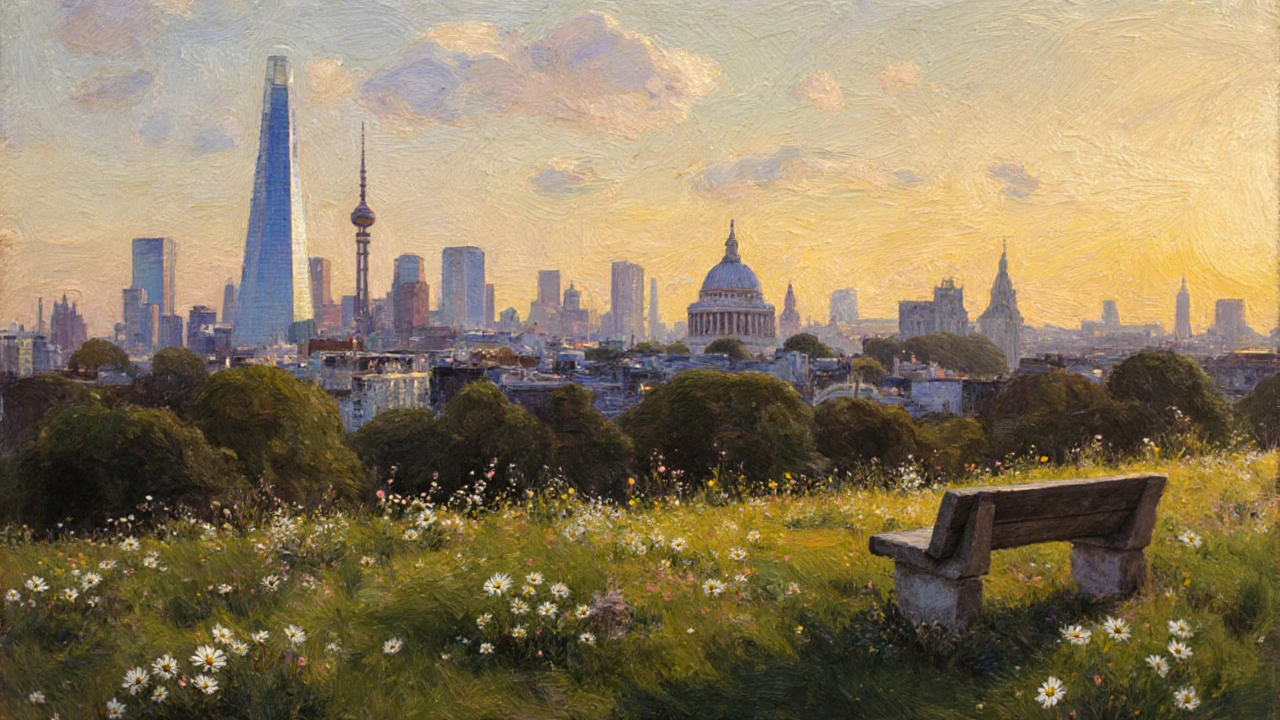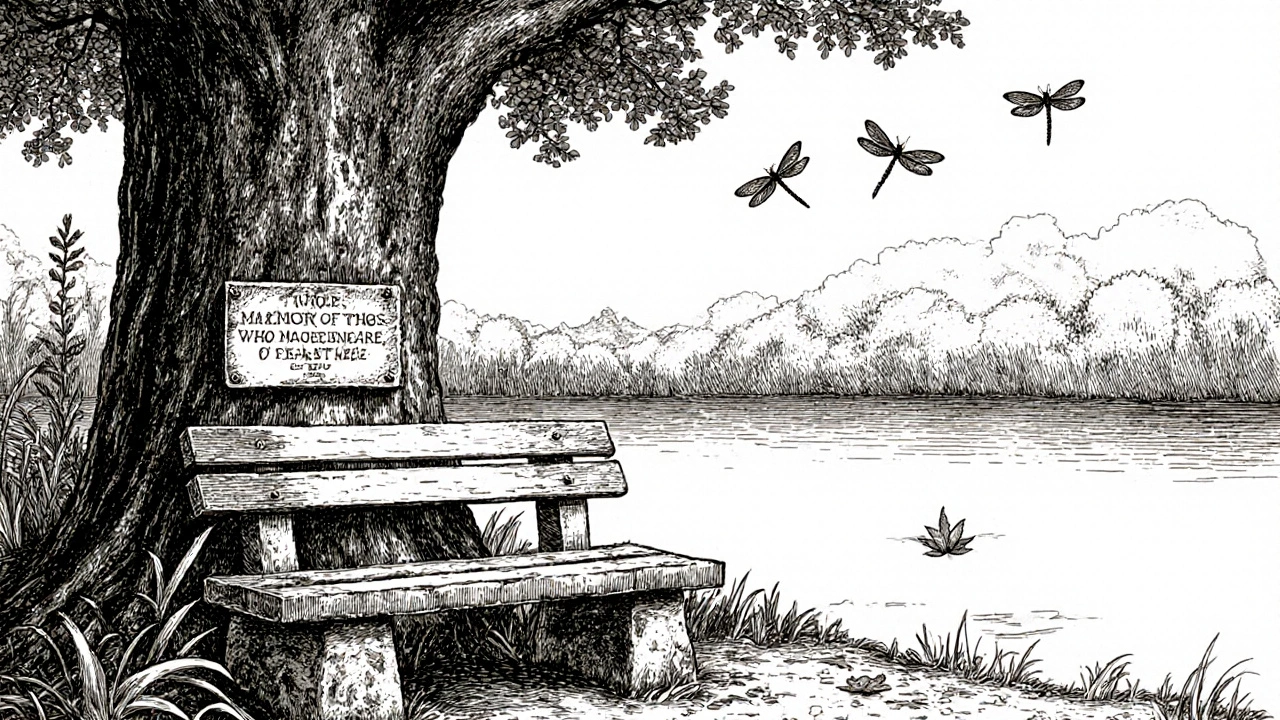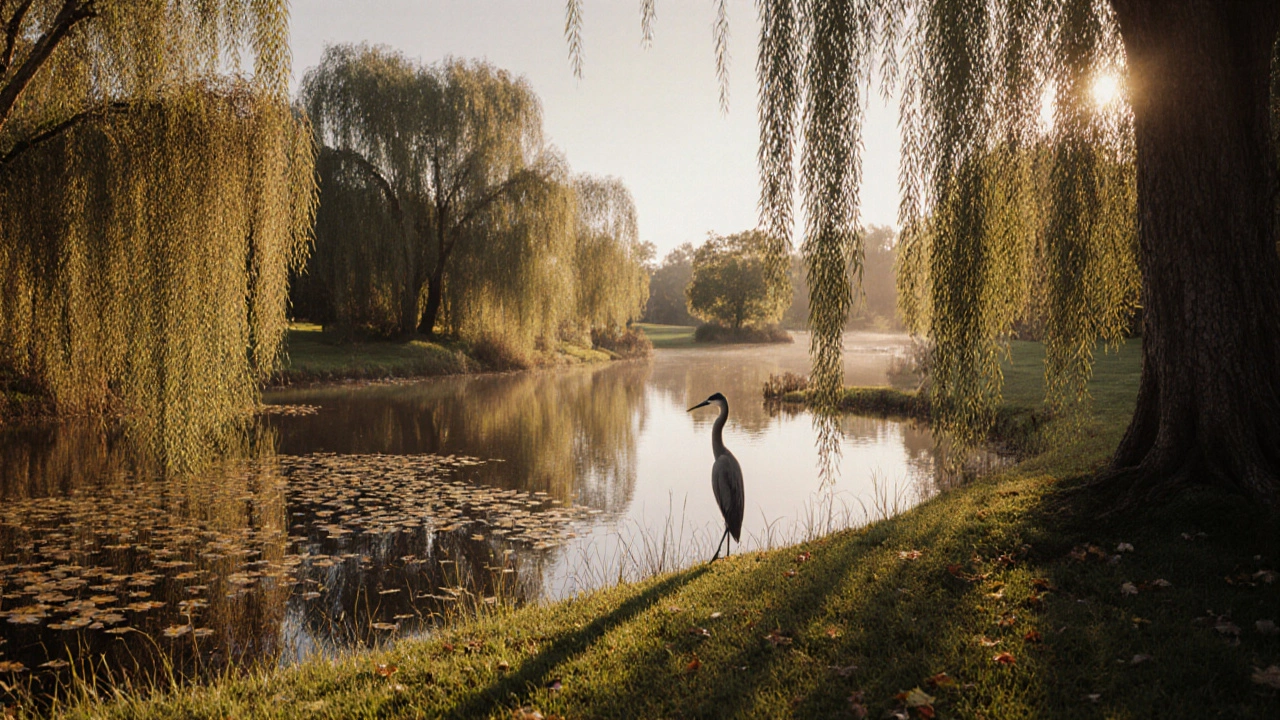Most people walk past Waterlow Park without stopping. They’re rushing to Highgate Underground, heading to the cemetery, or chasing the next Instagram spot at Hampstead Heath. But if you take five minutes to step inside, you’ll find one of London’s quietest, most beautiful hidden gems-complete with two peaceful ponds, sweeping city views, and a sense of calm you won’t find in the middle of Camden or Islington.
What Makes Waterlow Park Different?
Waterlow Park isn’t big. At just 12 acres, it’s smaller than many London playgrounds. But what it lacks in size, it makes up for in character. Unlike manicured parks like St. James’s or Hyde Park, Waterlow feels wilder, more natural. The grass isn’t perfectly striped. Trees grow where they want. Birds nest in the hedges. And the two ponds? They’re not for paddle boats or ice skating. They’re for watching ducks, dragonflies, and the occasional heron.
The park was created in 1889 thanks to a donation from Sir Sydney Waterlow, a Victorian philanthropist and former Lord Mayor of London. He didn’t want a fancy garden-he wanted a place where working-class families could escape the city’s noise. That spirit still lives here. You won’t find fancy cafés or pay-to-enter attractions. Just benches, paths, and open space.
The Two Ponds: A Quiet Refuge
Walk south from the main entrance on Highgate West Hill, and you’ll find the first pond. It’s small, maybe 50 meters across, ringed by reeds and willow trees. In spring, it’s alive with frogspawn. In autumn, the water turns golden with falling leaves. Locals come here to sit with a book or just stare at the water. It’s the kind of place where time slows down.
Follow the path around to the second pond, slightly larger and deeper. This one has a small island in the middle, home to nesting ducks and occasional kingfishers. On quiet mornings, you might see someone with a sketchpad, capturing the reflection of the sky. The water is clear enough to see the fish swimming below-carp, roach, and the occasional perch. No one feeds them here. That’s the rule. And it shows. The ecosystem stays balanced.
These ponds aren’t just pretty. They’re part of London’s urban wildlife network. A 2023 survey by the London Wildlife Trust found 47 bird species recorded in Waterlow Park over the year-more than in some nature reserves outside the city. If you’re into birdwatching, bring binoculars. The best time? Early Saturday morning, before the dog walkers arrive.
The View: London from Above
Head up the hill toward the eastern edge of the park, and you’ll hit the real showstopper: the panoramic view of central London. From this spot, you can see the Shard, the BT Tower, and the dome of St. Paul’s-all in one frame. On a clear day, you can even make out the O2 Arena in the distance.
This view isn’t just for tourists. Locals come here at sunset. Couples sit on the grass, wrapped in blankets. Kids run ahead, chasing pigeons. Photographers set up tripods at 5:30 p.m., waiting for the light to hit the skyscrapers just right. It’s one of the few places in North London where you can stand in nature and still feel the pulse of the city.
There’s no sign pointing to it. No ticket booth. Just a grassy slope and a low stone wall. That’s part of the charm. You don’t need to know you’re supposed to be here. You just feel it.

Paths, Plants, and Quiet Corners
The park has three main paths: the loop around the ponds, the climb to the viewpoint, and the winding trail along the northern border. Each one feels different. The loop is shaded and cool, perfect for a slow walk. The climb is steep in places, but the effort pays off. And the northern trail? That’s where the wildflowers grow.
In late May, the meadow bursts into color. Oxeye daisies, knapweed, and bird’s-foot trefoil bloom in patches. Bees buzz. Butterflies float. No one mows this area until late summer, letting nature take its course. It’s a small act of rebellion against the usual park rules-and it makes all the difference.
Look for the old stone benches tucked under the trees. One near the west pond has a plaque: “In memory of those who found peace here.” No names. Just that. You’ll find people sitting there, quiet, alone, just breathing.
What to Bring (and What to Leave Behind)
You don’t need much. A water bottle. A jacket-even in summer, the wind picks up on the hill. A book. Or nothing at all. That’s fine too.
Leave the loud music. Leave the frisbees. Leave the dogs off-leash. The park doesn’t ban them outright, but the unwritten rule is clear: keep it quiet. This isn’t a playground. It’s a sanctuary. People come here to escape noise, not add to it.
There’s no café inside the park. The nearest one is a 10-minute walk on Highgate Village. Bring your own tea in a thermos. Or pick up a sandwich from the local bakery on the corner of Archway Road. Eat it on the bench with a view.

When to Visit
Spring and autumn are the best times. The light is softer. The colors are richer. Winter has its own quiet beauty-frosted ponds, bare branches, mist rising over the city. Summer? It’s crowded on weekends. If you want solitude, go on a weekday morning. Tuesday or Wednesday, 8 a.m. You’ll likely have the viewpoint to yourself.
Don’t come expecting crowds or events. There are no concerts here. No farmers’ markets. No seasonal light displays. That’s the point. Waterlow Park doesn’t try to be anything other than what it is: a quiet corner of London where nature still has room to breathe.
How to Get There
By tube: Highgate Station (Northern Line) is the closest. Exit onto Highgate West Hill. Walk straight up the hill for 5 minutes. The park entrance is on your left, just past the old stone gate.
By bus: Routes 43, 134, and 210 stop near Archway or Highgate Village. Walk 10-15 minutes uphill.
By foot: If you’re coming from Hampstead Heath, it’s a 20-minute walk through the woods. The path from Parliament Hill is steep but worth it.
There’s no parking. Don’t try to drive. The streets around are narrow and full of residents. Take public transport. Or walk. It’s part of the experience.
Can I feed the ducks at Waterlow Park?
No, feeding the ducks is discouraged. The ponds are part of a natural ecosystem, and bread or processed food harms the water quality and the birds’ health. If you want to see wildlife, bring binoculars instead. You’ll get better views-and the ducks will stay healthier.
Is Waterlow Park free to enter?
Yes, completely free. No tickets, no fees, no opening hours. It’s open 24/7, though it’s best to visit during daylight. The park is well-lit on the main paths, but the trails can be uneven after dark.
Are dogs allowed in Waterlow Park?
Yes, dogs are welcome, but they must be kept on a lead near the ponds and on the main paths. Off-leash dogs are allowed in the open grassy areas, but owners are expected to clean up after them. Many locals keep their dogs leashed out of respect for the quiet atmosphere and other visitors.
Is Waterlow Park accessible for wheelchairs or strollers?
The main paths around the ponds and the route to the viewpoint are paved and mostly flat. There are some steep sections, especially near the top of the hill, but ramps are in place. The park has accessible toilets near the entrance. It’s not fully flat, but it’s one of the more wheelchair-friendly green spaces in North London.
Why isn’t Waterlow Park more popular?
It doesn’t market itself. No ads. No social media campaigns. No branded events. It’s maintained by the local council, not a private company. That’s why it feels authentic. Most visitors are locals who discovered it by accident-or were told by a friend. That’s how it should be. Some places aren’t meant to go viral.
Final Thoughts: A Park That Doesn’t Try Too Hard
London has hundreds of parks. Some are grand. Some are trendy. Waterlow Park is neither. It doesn’t need to be. It’s quiet. It’s real. It’s a place where you can sit with your thoughts and still see the skyline. Where nature isn’t curated-it’s just there.
If you’re looking for a break from the noise, the rush, the endless scrolling-this is it. No tickets. No lines. Just a bench, a view, and the sound of water.
Go there when you need to remember that the city still holds spaces like this. And don’t tell everyone. Some secrets are better kept.
